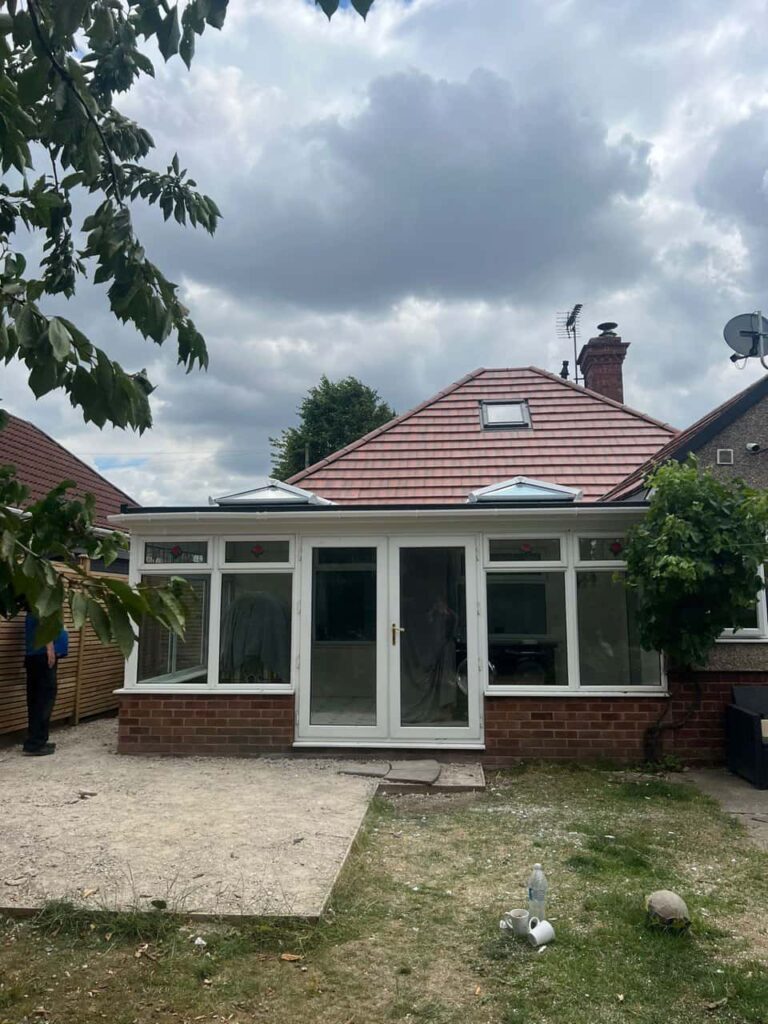Slipped roof tiles are a common issue for many homeowners and, if left unattended, can lead to serious damage and costly repairs. While a single displaced tile may not seem urgent, it often indicates underlying problems that require professional attention. At LJ Roofing Melksham, we frequently assist clients across Melksham, Wiltshire with identifying, repairing, and preventing slipped tiles before they develop into more extensive issues.
Understanding the causes of tile slippage—and how to prevent it—is key to keeping your roof secure and weatherproof for years to come.
Common Causes of Slipped Roof Tiles
1. Weather and Storm Damage
High winds, heavy rain, and fluctuating temperatures can all put strain on roof tiles. Strong gusts may dislodge poorly fixed tiles, while freeze-thaw cycles can cause tiles to crack or shift out of place.
- Wind uplift can lift tiles off their fixings
- Rainwater ingress may weaken the bedding or underlay
- Sudden temperature drops can cause expansion and contraction
Weather conditions in Melksham, Wiltshire often expose roofs to these risks, especially during autumn and winter.
2. Worn or Rusted Nail Fixings
Over time, the nails or clips that secure roof tiles can corrode or degrade. When fixings fail, tiles become loose and may eventually slide out of position.
- Galvanised nails may rust in older roofs
- Improper or insufficient fixings during installation
- Movement in the timber battens can loosen nails over time
This is a particular concern in roofs over 20 years old or those using traditional fixing methods.
3. Deterioration of Mortar Bedding
Some roof tiles are secured using mortar, particularly on ridges, hips, and verges. This mortar can break down over time due to weathering, leaving tiles unstable.
- Cracked or crumbling mortar leads to instability
- Excessive moss growth retains moisture and accelerates decay
- Lack of maintenance allows the damage to go unnoticed
Replacing worn mortar and switching to dry-fix systems can help prevent this issue.
4. Poor Installation or Workmanship
Incorrect tile alignment, poor spacing, or inadequate fixings can all cause problems down the line. Inexperienced or rushed installation often leads to premature failure.
- Insufficient headlap or side overlap between tiles
- Loose or missing clips
- Inappropriate materials for roof pitch or location
At LJ Roofing Melksham, we routinely correct issues caused by substandard installations throughout Melksham, Wiltshire.
5. Ageing Roof Structures
As the roof ages, supporting components such as battens and underlays may deteriorate, making it harder for tiles to stay in place. Timber battens may warp, rot, or shrink, loosening their grip on fixings.
- Battens become brittle or soft
- Felt underlays degrade and offer less protection
- Shifts in the structure cause tiles to move
This is a gradual process, but one that can significantly affect roof performance if not addressed.
How to Prevent Slipped Roof Tiles
1. Schedule Regular Roof Inspections
Routine inspections by a professional roofing contractor can identify early signs of slippage and other issues before they worsen.
- Spot broken or loose tiles before they fall
- Identify weathering, corrosion, or movement in fixings
- Recommend timely repairs to prevent further damage
LJ Roofing Melksham offers thorough roof assessments throughout Melksham, Wiltshire to help maintain the integrity of your roof year-round.
2. Upgrade to Dry-Fix Systems
Modern dry-fix systems use mechanical fixings instead of mortar and offer greater longevity and resistance to weather damage.
- Ideal for ridge and verge tiles
- Less maintenance and longer lifespan
- Fully compliant with current Building Regulations
This upgrade improves the overall durability and safety of the roof.
3. Repair or Replace Worn Fixings
Old or rusted nails should be replaced with corrosion-resistant alternatives. When re-roofing or repairing, ensure tiles are securely fastened using the correct methods for the pitch and exposure level.
- Use stainless steel or copper fixings
- Install fixings according to tile manufacturer guidelines
- Reinforce vulnerable areas such as eaves, ridges, and verges
4. Keep the Roof Clear of Moss and Debris
Moss and organic growth can trap moisture, accelerate decay, and interfere with tile positioning.
- Remove moss regularly to avoid water retention
- Clear gutters and valleys to prevent water back-up
- Treat with safe, roof-friendly biocides when needed
Conclusion
Slipped roof tiles are more than just an eyesore—they can be the first sign of more serious structural issues. By understanding the causes and taking preventative measures, homeowners can avoid unnecessary repairs and ensure their roof remains weatherproof and secure.
If you’ve noticed slipped or missing tiles on your property in Melksham, Wiltshire, contact LJ Roofing Melksham. Our expert team is here to inspect, repair, and protect your roof, providing long-term peace of mind and professional service you can rely on.
Call us on: 01225 434 494
Click here to find out more about LJ Roofing Melksham
Click here to complete our contact form and see how we can help with your roofing needs.

